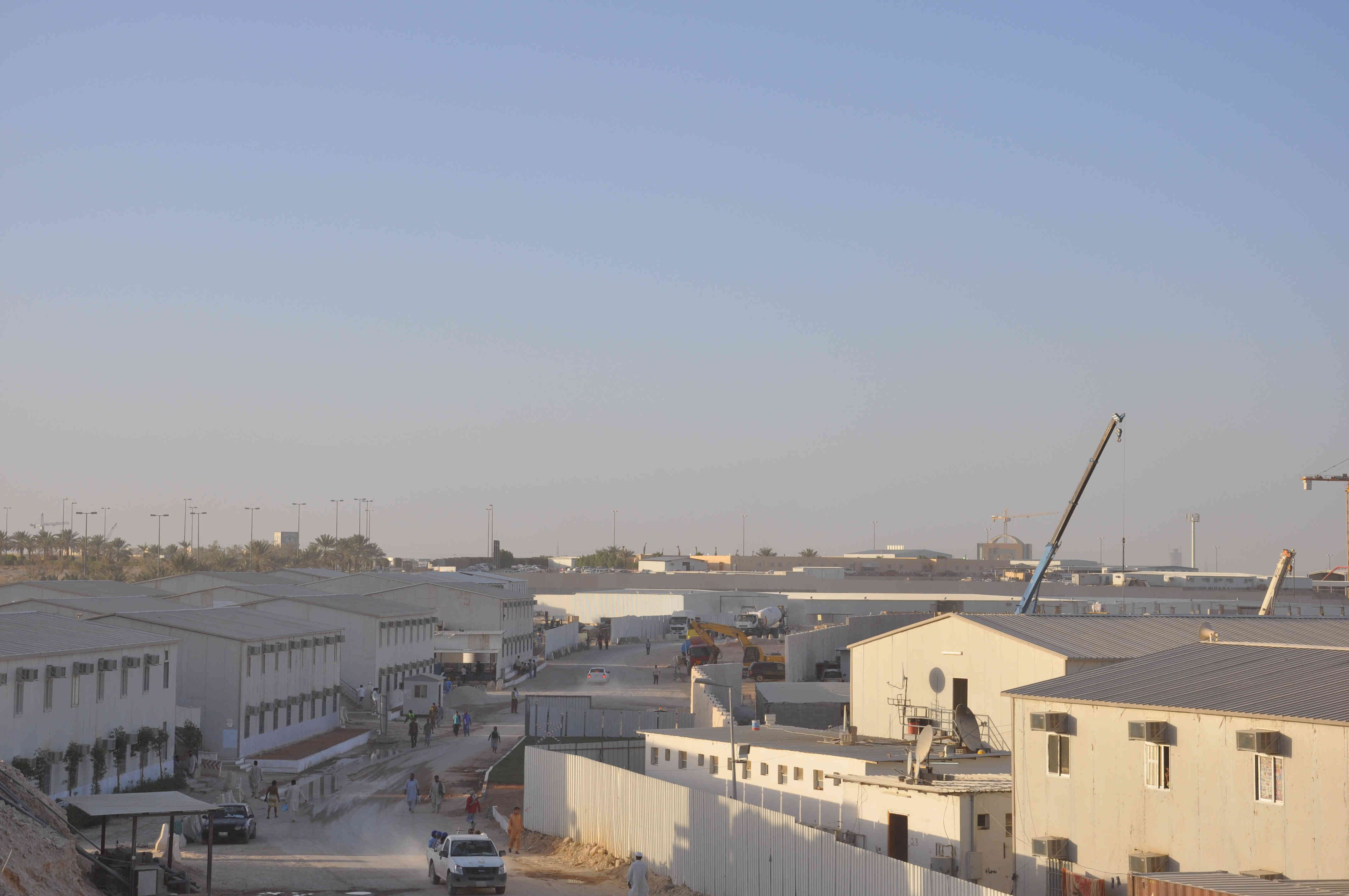Tel: 0086-532-88966982
0086-532-88965892
Website: www.lidajituan.com
E-mail: sales@lidajituan.com
Head office: 5th Floor, Building A, Dalen Center, 180 Haier Road, Qingdao, 266000, China
Mining Camp House Constructions Using Prefabricated Building Methods Lida Group
Classification:Industry News
Release time:2025-07-31 11:00
Mining Camp House Constructions Using Prefabricated Building Methods Lida Group
The relentless dust of Chile's Atacama Desert swirls around copper mining camps where traditional construction crews battle impossible conditions. At 3,000 meters elevation, concrete won't cure properly, high winds halt welding operations, and temperature swings warp steel frames. Here, Lida Group's engineered prefabricated house solutions arrive as fully assembled sanctuaries – commissioning in days rather than months while outperforming site-built structures. This transformation represents more than accelerated timelines; it signals a fundamental shift in how resource industries approach remote constructions through industrialized precision.
Mining operations face compounding challenges that conventional building methods cannot overcome. Remote locations suffer from chronic skilled labor shortages, with 78% of mining companies reporting difficulty sourcing welders and electricians. Extreme environments degrade materials – UV radiation cracking conventional insulation in months, corrosive dust eating through electrical conduits, and seismic activity testing structural integrity. Tight project windows demand facilities operational before exploration licenses expire, while worker retention hinges on providing livable camp house accommodations that combat remote fatigue.
Lida Group's response lies in controlled factory environments where prefab building components take shape with millimeter precision. Robotic welders assemble structural frames with 0.2mm tolerances impossible to achieve onsite. Climate-controlled spray booths apply uniform corrosion-resistant coatings unaffected by desert winds or Arctic humidity. CNC machines cut insulation panels to exact specifications, eliminating thermal bridging points that plague field installations. This manufacturing discipline produces modular house units with 98% component interchangeability and defect rates 90% lower than site-built alternatives.

The technical superiority manifests in specialized mining applications:
Exploration Camp Mobility
Geological teams require rapidly deployable bases near drilling sites. Lida's helicopter-transportable 20ft prefab house units feature:
- Fold-out annexes tripling living space
- Integrated solar power and water recycling
- Bolt-together connections requiring no welding
- Case: Andes mineral survey team established functional base in 8 hours
Processing Plant Adjacent Housing
Acid mist and particulate matter demand specialized protection:
- Positive-pressure ventilation systems excluding contaminants
- Chemical-resistant epoxy flooring
- EMI-shielded compartments for instrumentation
- Impact: Reduced respiratory incidents by 63% at Zambian copper mine
High-Altitude Accommodations
Thin air environments at 4,000m+ require engineered solutions:
- Oxygen-enriched sleeping quarters
- Low-pressure differential airlocks
- UV-resistant window films blocking intense radiation
- Result: Eliminated altitude sickness cases at Peruvian silver operation
Comparative Performance Metrics
Structural innovations enable this performance leap. High-strength S550MC steel allows slender structural members with 30% greater load capacity. Composite wall systems integrate aerogel insulation achieving R-40 values in 150mm profiles – critical for maintaining habitable temperatures in Siberia's -50°C winters. Connection systems feature slotted bolt holes accommodating thermal expansion and seismic movement, preventing stress fractures that compromise conventional structures.

For mining camp house complexes, engineered foundations prevent permafrost degradation in Arctic sites or soil subsidence in desert environments. Screw pile systems install without concrete curing, while thermosyphon technology actively cools permafrost beneath structures. These solutions demonstrate 0.02mm annual settlement versus 15mm in traditional builds – preventing door jams, utility fractures, and structural misalignments that plague site-built facilities.
Worker wellbeing enhancements include:
- Circadian lighting systems regulating sleep cycles
- HEPA filtration removing 99.97% of silica dust
- Acoustic insulation achieving 52dB noise reduction
- Outcome: 41% lower turnover at Australian iron ore camps
Lida Group's prefabricated house methodology extends beyond accommodations to integrated support facilities:
- Medical Clinics: Negative-pressure isolation wards with telemedicine capabilities
- Dining Complexes: Commercial kitchens with explosion-proof ventilation for gas camps
- Maintenance Workshops: Overhead crane systems rated for 20-ton equipment
- Laboratories: Vibration-damped floors enabling micron-level assay precision
Sustainability integration occurs at multiple levels. Factory precision reduces material waste by 75% compared to site construction. Solar-ready roofs feature pre-engineered attachment points and concealed conduits. Rainwater harvesting systems integrate into structural designs, while greywater recycling reduces freshwater consumption by 60%. The bolted connection systems enable future relocation or repurposing, creating circular economies where traditional constructions become disposable liabilities.
Validation comes from extreme deployments:
- Chilean Copper Mine: Withstood 8.8 magnitude earthquake with zero structural damage
- Alaskan Gold Operation: Maintained +22°C interior during -52°C polar vortex
- Saudi Phosphate Site: Resisted 150km/h sandstorms without envelope compromise
Future innovations focus on cognitive camps:
- IoT sensors monitoring air quality and structural health
- Predictive maintenance algorithms forecasting component failures
- Automated climate systems optimizing energy use
- Phase-change windows dynamically regulating solar gain
Lida Group's engineered approach proves that mining camp house solutions transcend basic shelter – they become strategic assets impacting core operations. When exploration teams deploy faster, geologists work precisely in controlled environments, and maintenance crews rest adequately between shifts, prefabrication delivers measurable productivity gains beyond construction savings. This operational reality positions industrialized building methods not as alternative approach but as essential methodology for modern resource development – proving that in Earth's most challenging environments, precision manufacturing conquers where conventional construction falters.
prefabricated house,camp house,constructions,prefab building,mining
Contact Us
Head Office: 5th Floor,Building A,Darron Center,No.180,Haier Road,Qingdao, 266000,China
Tel: 0086-532-88966982 88965892 Fax:0086-532-88965571
WhatsApp:+86 13793209022
Mobile/Wechat:+86-15166671720
Email: sales@lidajituan.com Website: www.lidajituan.com
Alternate Website: www.lidamodularhouse.com
Head Office: 5th Floor,Building A,Darron Center,No.180,Haier
Road,Qingdao, 266000,China
Tel: 0086-532-88966982 88965892
Fax:0086-532-88965571
Email: sales@lidajituan.com
Website: www.lidajituan.com
Alternate Websit: www.prefabhousecn.com
Wechat/WhatsApp:+86-13793209022
Copyright(c)2023 All Rights Reserved SEO Business license

